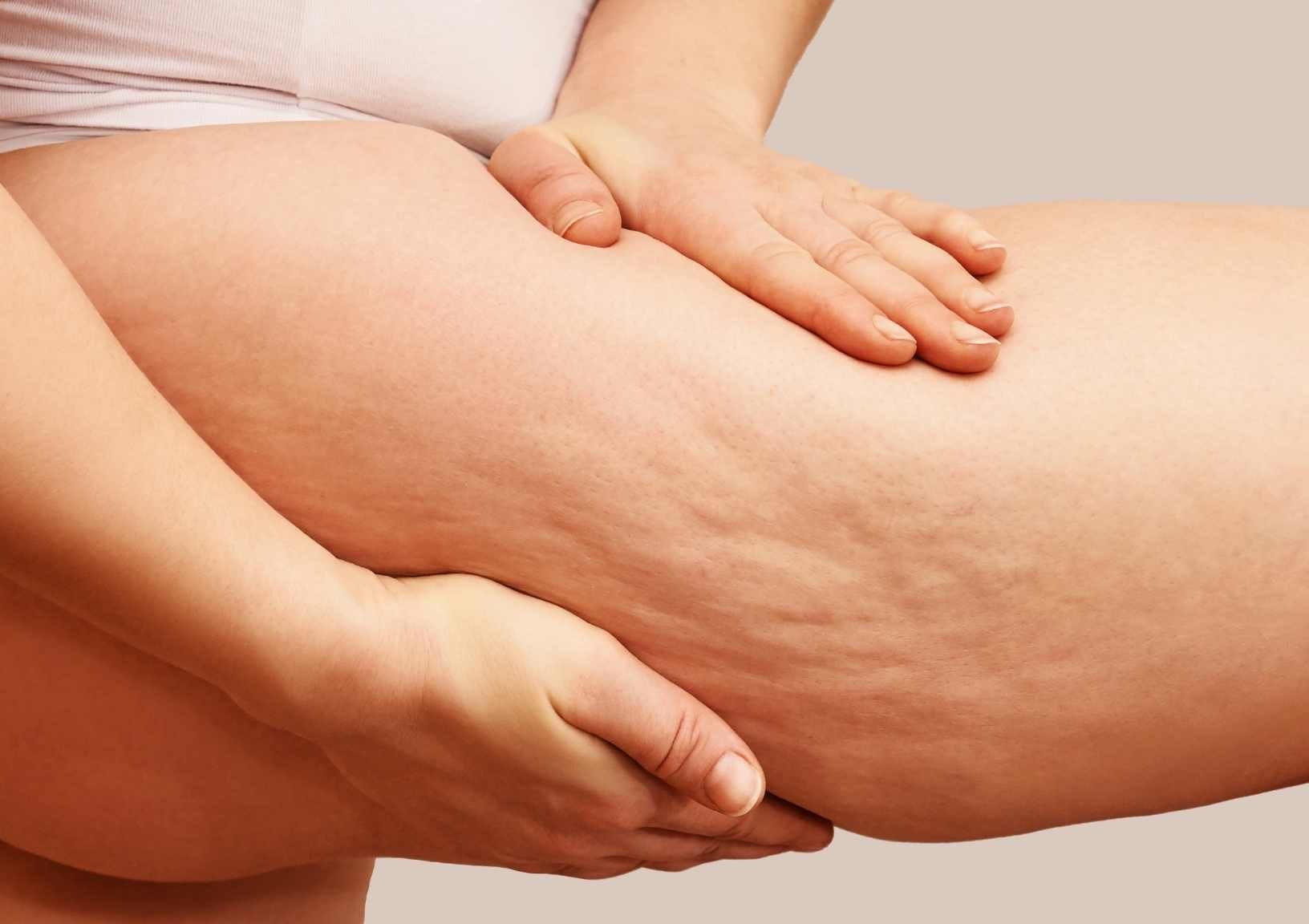What is cellulite? And what causes it?
What is Cellulite?
Peruse the pages of any women’s magazine and you’re certain to read something about cellulite, loose skin, stretch marks, or a similar skincare concern. Like most topics to do with women’s bodies, cellulite is often correlated with weight. However, the number you see on the scale is just one of many factors that may feed the occurrence of cellulite.
What are the different types of cellulite?
Before we discuss the cause, let’s first understand the various types of cellulite and how to identify them on your own body.
Soft cellulite
Soft cellulite is often identified by sagging skin near your bottom, thighs, and underarms. Your skin may feel flaccid from the quick accumulation and loss of fat. You can minimize the appearance of soft cellulite by adopting a diet and exercise routine tailored toward building muscle mass.
Hard cellulite
Do you have deep depressions on your upper thighs? Could you compare the surface of your skin to that of an orange peel? If the answer to either of these questions is “yes,” you may have identified hard cellulite.
Hard cellulite is firm and, in some cases, may be painful to the touch. Keep an eye out for hard cellulite around your hips, thighs, and knees, as these are the areas of the body most afflicted.
Edematous cellulite
Poor circulation and fluid retention in the body are a recipe for disaster, better known as edematous cellulite. This type of cellulite affects the lower legs, thighs, and knees. Edematous cellulite is less common but should be taken more seriously. In some cases, the tissue beneath the skin may harden and become tender.
Causes of cellulite
Cellulite is said to affect 80 to 90% of all women and typically develops during puberty. Since cellulite is such a universal skincare concern, its causes are well-known. Below are just a handful of the common causes of cellulite. Check out the list and see if anything applies.
A sedentary lifestyle
If most of your work day is spent behind a desk, your health may unfortunately suffer. Without regular movement, you may develop poor posture, carpal tunnel, or cellulite. Fortunately, there are small changes you can make in your daily routine to help counteract these risks.
Consider investing in a standing desk that allows you to shift your position throughout the day. And if you have time during your break(s), take a small stroll around your office space or outside if the weather permits.
Lack of exercise
This goes hand in hand with a sedentary lifestyle, but a lack of exercise can contribute to the accumulation of cellulite. As we age, we begin to lose muscle tone and store fat. Without some form of exercise, you’re likely to develop loose skin and cellulite.
Hormonal changes
Your hormones frequently experience fluctuations, in most cases without you even knowing. And then, of course, there are those instances where hormonal changes are obvious such as during pregnancy.
The inevitable weight gain that accompanies pregnancy can intensify the appearance of cellulite. There is a suspected correlation between increased estrogen levels and the severity of cellulite in the body.
Genetics
One common cause of cellulite that is beyond your body’s control is genetics. The likelihood to develop cellulite is believed to be hereditary, meaning that try as you might, it may be impossible to get rid of. Before you get too hard on yourself, recall that cellulite is perfectly normal and very common.
Weight gain
Both weight gain and loss can cause cellulite to emerge or become exacerbated. If you have cellulite on your body, it won’t necessarily worsen with weight gain but may become more noticeable.
That’s not to say that thinner women don’t experience cellulite, though it may appear in fewer places on the body and with less severity.
High stress levels
When we’re super stressed, our muscles grow tense and connective tissues seize. This may prevent the expulsion of toxins, which in turn can result in the formation of cellulite. Lower your stress levels by introducing yoga, meditation, journaling, or another peaceful practice into your daily life.
Cellulite vs. fat
It’s tough to compare cellulite with fat as the two aren’t exactly equal. Fat is an element that contributes to cellulite when it gets trapped beneath your skin in pockets of connective tissue. Depending on the unique structure of your connective tissue, these fat deposits may cause dimpling on the surface of your skin, which we commonly recognize as cellulite.
Can cellulite go away?
The likelihood of getting rid of cellulite altogether is slim. However, that’s not to say you can’t drastically minimize its appearance. Some simple lifestyle changes you can make include:
Maintaining a balanced diet rich in fruits, veggies, and lean protein
Move your body for at least 30 minutes each day
Keep smoking and drinking to a minimum or eliminate these habits altogether
Consider taking a collagen supplement to boost skins elasticity
5 myths about cellulite
Cellulite is caused by toxin buildup in the body
Cellulite is exclusively a weight issue
Cardio is the only way to get rid of cellulite
Wearing certain types of clothing can cause cellulite
The only way to fight cellulite is with expensive professional treatments

















